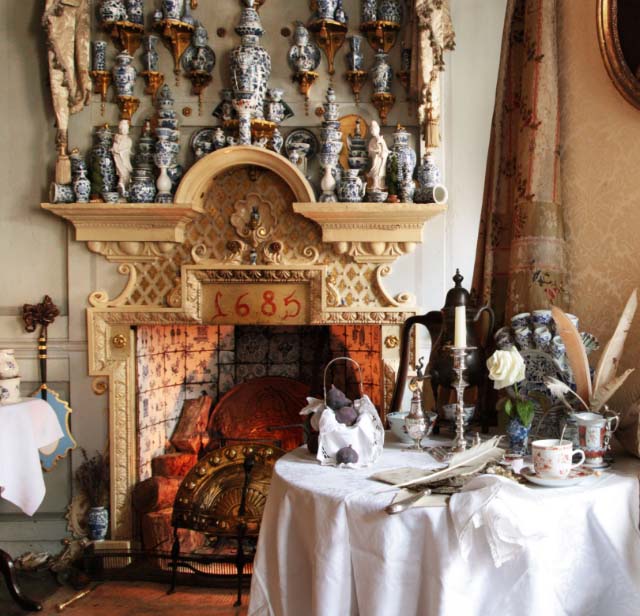Dennis Severs House
This Grade II listed Georgian terraced house in Folgate Street is a "still-life drama" created by the previous owner and artist Dennis Severs, as an "historical imagination" of what life would have been like inside for a family of Huguenot silk weavers.
This is one of London's most singular, intriguing attractions, in one of its most magical properties. Part exhibition, part installation, it's a work of fantasy, designed to create an atmosphere redolent of the 18th century and paint a picture of what life was like then. It's the brainchild of an American artist, Dennis Severs, who purchased the house in the '70s, when the old Huguenot district of Spitalfields was rundown and little valued, unlike today when parts of it have been gentrified and it's home to artistic and literary luminaries such as Tracey Emin and Jeanette Winterson.
Severs began to live in the house as he imagined its original inhabitants would have done, and spent a lot of time in (and slept in) every room in order to 'harvest the atmosphere'. As a result, he gradually gave life to an invented family, whose imagined lives became a detailed 'still life drama' for visitors to experience. They're a family of Huguenot silk weavers — the Jervis family — invisible but very much present in Folgate Street.
Severs filled the house with period fittings and furniture, as well as authentic smells and sounds, to create a genuine atmosphere. Each of the house's ten rooms reflects a different era of the building's past — a snapshot of the life of the family who 'lived' here between 1724 and 1914. Dennis Severs died in 1999, but the house has been preserved and is open for tours. Your exploration begins in the cellar, moves up to the kitchen and takes in the rest of the house, room by room.
Along the way it reveals the lives of different generations of the Jervises: the prosperous Georgian family in the well-appointed first floor rooms, the Victorian weavers surviving in the squalid garret. How you experience the journey very much depends on your imagination, for each room appears as if the occupant(s) have just left it, leaving such clues as a half-eaten plate of food, a discarded wig or a full chamber pot.
Severs' motto for the house was "You either see it or you don't" and your visit is a very personal experience. You're 'instructed' to remain quiet during the tour — Severs was known to eject visitors who talked too much — and touching objects isn't encouraged; as such it's the antithesis of a modern hands-on museum and isn't ideal for younger children.
Some find this attitude a little precious on the part of those running the house, while others find it healthy in our noisy era when people seem incapable of concentrating for more than 30 seconds. The atmosphere of a bygone age is best maintained if you refrain from looking out of the windows — which allow the 21st century to intrude —and the night-time, candlelit tours are the most atmospheric, especially those which take place around Christmas.

